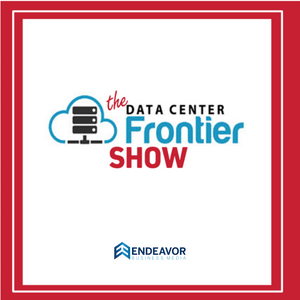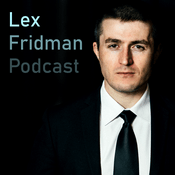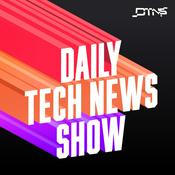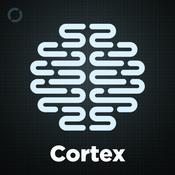Available Episodes
5 of 176
- Beyond the Grid: Natural Gas, Speed, and the New Data Center RealityIn this Data Center Frontier Trends Summit 2025 session—moderated by Stu Dyer (CBRE) with panelists Aad den Elzen (Solar Turbines/Caterpillar), Creede Williams (Exigent Energy Partners), and Adam Michaelis (PointOne Data Centers)—the conversation centered on a hard truth of the AI buildout: power is now the limiting factor, and the grid isn’t keeping pace. Dyer framed how quickly the market has escalated, from “big” 48MW campuses a decade ago to today’s expectations of 500MW-to-gigawatt-scale capacity. With utility timelines stretched and interconnection uncertainty rising, the panel argued that natural gas has moved from taboo to toolkit—often the fastest route to firm power at meaningful scale. Williams, speaking from the IPP perspective, emphasized that speed-to-power requires firm fuel and financeable infrastructure, warning that “interruptible” gas or unclear supply economics can undermine both reliability and underwriting. Den Elzen noted that gas is already a proven solution across data center deployments, and in many cases is evolving from a “bridge” to a durable complement to the grid—especially when modular approaches improve resiliency and enable phased buildouts. Michaelis described how operators are building internal “power plant literacy,” hiring specialists and partnering with experienced power developers because data center teams can’t assume they can self-perform generation projects. The panel also “de-mystified” key technology choices—reciprocating engines vs. turbines—as tradeoffs among lead time, footprint, ramp speed, fuel flexibility, efficiency, staffing, and long-term futureproofing. On AI-era operations, the group underscored that extreme load swings can’t be handled by rotating generation alone, requiring system-level design with controls, batteries, capacitors, and close coordination with tenant load profiles. Audience questions pushed into public policy and perception: rate impacts, permitting, and the long-term mix of gas, grid, and emerging options like SMRs. The panel’s consensus: behind-the-meter generation can help shield ratepayers from grid-upgrade costs, but permitting remains locally driven and politically sensitive—making industry communication and advocacy increasingly important. Bottom line: in the new data center reality, natural gas is here—often not as a perfect answer, but as the one that matches the industry’s near-term demands for speed, scale, and firm power.--------56:45
- ILA Facilities: The Workhorse of Fiber TransportIn this episode, we crack open the world of ILA (In-Line Amplifier) huts, those unassuming shelters are quietly powering fiber connectivity. Like mini utility substations of the fiber world, these small, secure, and distributed facilities keep internet, voice, and data networks running reliably, especially over long distances or in developing areas. From the analog roots of signal amplification to today’s digital optical technologies, this conversation explores how ILAs are redefining long-haul fiber transport. We’ll discuss how these compact, often rural, mini data centers are engineered and built to boost light signals across vast distances. But it’s not just about the tech. There are real-world challenges to deploying ILAs: from acquiring land in varied environments, to coordinating civil construction often built in isolation. You’ll learn why site selection is as much about geology and permitting as it is about signal loss, and what factors can make or break an ILA deployment. We also explore the growing role of hyperscalers and colocation providers in driving ILA expansion, adjacent revenue opportunities, and what ILA facilities can mean for the future of rural connectivity. Tune in to find out how the pulse of long-haul fiber is beating louder than ever.--------15:35
- Scaling AI: Adaptive Reuse, Power-Rich Sites, and the New GPU FrontierIn this panel session from the 2025 Data Center Frontier Trends Summit (Aug. 26-28) in Reston, Va., JLL’s Sean Farney moderates a high-energy panel on how the industry is fast-tracking AI capacity in a world of power constraints, grid delays, and record-low vacancy. Under the banner “Scaling AI: The Role of Adaptive Reuse and Power-Rich Sites in GPU Deployment,” the discussion dives into why U.S. colocation vacancy is hovering near 2%, how power has become the ultimate limiter on AI revenue, and what it really takes to stand up GPU-heavy infrastructure at speed. Schneider Electric’s Lovisa Tedestedt, Aligned Data Centers’ Phill Lawson-Shanks, and Sapphire Gas Solutions’ Scott Johns unpack the real-world strategies they’re deploying today—from adaptive reuse of industrial sites and factory-built modular systems, to behind-the-fence natural gas, microgrids, and emerging hydrogen and RNG pathways. Along the way, they explore the coming “AI inference edge,” the rebirth of the enterprise data center, and how AI is already being used to optimize data center design and operations. During this talk, you’ll learn: * Why record-low vacancy and long interconnection queues are reshaping AI deployment strategy. * How adaptive reuse of legacy industrial and commercial real estate can unlock gigawatt-scale capacity and community benefits. * The growing role of liquid cooling, modular skids, and grid-to-chip efficiency in getting more power to GPUs. * How behind-the-meter gas, virtual pipelines, and microgrids are bridging multi-year grid delays. * Why many experts expect a renaissance of enterprise data centers for AI inference at the edge. Moderator: Sean Farney, VP, Data Centers, Jones Lang LaSalle (JLL) Panelists: Tony Grayson, General Manager, Northstar Lovisa Tedestedt, Strategic Account Executive – Cloud & Service Providers, Schneider Electric Phill Lawson-Shanks, Chief Innovation Officer, Aligned Data Centers Scott Johns, Chief Commercial Officer, Sapphire Gas Solutions--------1:00:38
- Bridging the Data Center Power Gap: Utilities, On-Site Power, and the AI BuildoutRecorded live at the 2025 Data Center Frontier Trends Summit in Reston, VA, this panel brings together leading voices from the utility, IPP, and data center worlds to tackle one of the defining issues of the AI era: power. Moderated by Buddy Rizer, Executive Director of Economic Development for Loudoun County, the session features: Jeff Barber, VP Global Data Centers, Bloom Energy Bob Kinscherf, VP National Accounts, Constellation Stan Blackwell, Director, Data Center Practice, Dominion Energy Joel Jansen, SVP Regulated Commercial Operations, American Electric Power David McCall, VP of Innovation, QTS Data Centers Together they explore how hyperscale and AI workloads are stressing today’s grid, why transmission has become the critical bottleneck, and how on-site and behind-the-meter solutions are evolving from “bridge power” into strategic infrastructure. The panel dives into the role of gas-fired generation and fuel cells, emerging options like SMRs and geothermal, the realities of demand response and curtailment, and what it will take to recruit the next generation of engineers into this rapidly changing ecosystem. If you want a grounded, candid look at how energy providers and data center operators are working together to unlock new capacity for AI campuses, this conversation is a must-listen.--------36:04
- AI for Good: Building for AI Workloads and Using AI for Smarter Data CentersLive from the Data Center Frontier Trends Summit 2025 – Reston, VA In this episode, we bring you a featured panel from the Data Center Frontier Trends Summit 2025 (Aug. 26-28), sponsored by Schneider Electric. DCF Editor in Chief Matt Vincent moderates a fast-paced, highly practical conversation on what “AI for good” really looks like inside the modern data center—both in how we build for AI workloads and how we use AI to run facilities more intelligently. Expert panelists included: Steve Carlini, VP, Innovation and Data Center Energy Management Business, Schneider Electric Sudhir Kalra, Chief Data Center Operations Officer, Compass Datacenters Andrew Whitmore, VP of Sales, Motivair Together they unpack: How AI is driving unprecedented scale—from megawatt data halls to gigawatt AI “factories” and 100–600 kW rack roadmaps What Schneider and NVIDIA are learning from real-world testing of Blackwell and NVL72-class reference designs Why liquid cooling is no longer optional for high-density AI, and how to retrofit thousands of brownfield, air-cooled sites How Compass is using AI, predictive analytics, and condition-based maintenance to cut manual interventions and OPEX The shift from “constructing” to assembling data centers via modular, prefab approaches The role of AI in grid-aware operations, energy storage, and more sustainable build and operations practices Where power architectures, 800V DC, and industry standards will take us over the next five years If you want a grounded, operator-level view into how AI is reshaping data center design, cooling, power, and operations—beyond the hype—this DCF Trends Summit session is a must-listen.--------57:27
More Technology podcasts
Trending Technology podcasts
About The Data Center Frontier Show
Welcome to The Data Center Frontier Show podcast, telling the story of the data center industry and its future. Our podcast is hosted by the editors of Data Center Frontier, who are your guide to the ongoing digital transformation, explaining how next-generation technologies are changing our world, and the critical role the data center industry plays in creating this extraordinary future.
Podcast websiteListen to The Data Center Frontier Show, Lex Fridman Podcast and many other podcasts from around the world with the radio.net app

Get the free radio.net app
- Stations and podcasts to bookmark
- Stream via Wi-Fi or Bluetooth
- Supports Carplay & Android Auto
- Many other app features
Get the free radio.net app
- Stations and podcasts to bookmark
- Stream via Wi-Fi or Bluetooth
- Supports Carplay & Android Auto
- Many other app features


The Data Center Frontier Show
Scan code,
download the app,
start listening.
download the app,
start listening.



































